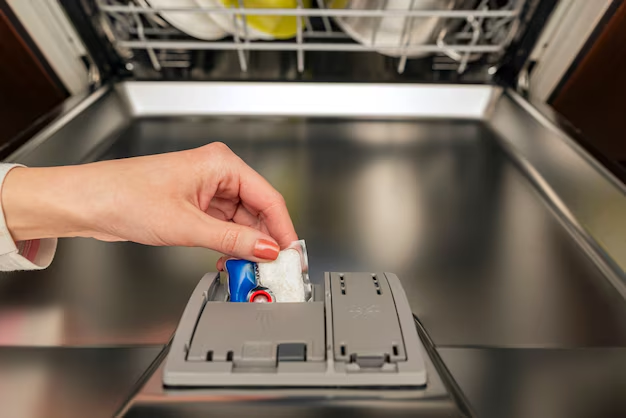Sparkling Clean and Efficient: A Step-by-Step Guide to Cleaning the Refrigerator Gasket
Is your refrigerator not sealing as tightly as it used to? A dirty gasket might be the culprit. This small yet significant part of your appliance plays a crucial role in maintaining the internal temperature by sealing the door shut. Without a clean gasket, your refrigerator has to work harder, reducing its efficiency and increasing your energy bills. But worry not, cleaning this essential component is a straightforward process that can extend the life of your appliance and improve its performance. Here’s how to meticulously get that gasket gleaming.
🧽 Understanding the Role of the Refrigerator Gasket
What is a Refrigerator Gasket?
The gasket is a flexible elastic strip that surrounds the refrigerator door. Its primary function is to form an airtight seal that prevents warm air from entering and cold air from escaping the fridge. This helps in maintaining the right temperature inside, ensuring your food stays fresh longer.
Why Keeping the Gasket Clean is Essential
A buildup of grime and food particles can cause the gasket to become less pliable, preventing it from sealing the door effectively. This can lead to:
- Energy Inefficiency: A faulty seal can cause your refrigerator to consume more energy, raising electricity costs over time.
- Spoiled Food: Improper sealing can result in temperature fluctuations, risking food spoilage.
- Persistent Odors: Old food particles and grime on the gasket can lead to unpleasant smells emanating from your fridge.
🛠️ Prepping for the Clean
Before diving into cleaning, it’s crucial to prepare and ensure you have everything you need for a smooth process:
Gather Your Cleaning Materials
- Mild Dish Soap or Vinegar: Both are effective at cutting through grime without damaging the gasket.
- Warm Water: Essential for diluting the cleaning agent and rinsing.
- Soft Cloth or Sponge: Non-abrasive to prevent damaging the gasket.
- Toothbrush or Small Cleaning Brush: To get into the crevices of the gasket folds.
- Towel: For drying after cleaning.
Pre-Cleaning Preparation
- Empty the Refrigerator Door: Remove all items from the door shelves to give you unrestricted access to the gasket.
- Turn Off the Fridge: If possible, unplug the refrigerator or switch off its power to prevent unnecessary electricity consumption during the cleaning process.
🚿 Step-by-Step Cleaning Guide
1. Initial Inspection
Before cleaning, inspect the gasket for any major cracks or tears. If the gasket is significantly damaged, consider replacing it rather than cleaning, as a faulty seal cannot be remedied by cleaning alone.
2. Dirt and Debris Removal
Use a dry toothbrush or small cleaning brush to dislodge and remove any loose debris and crumbs caught in the folds of the gasket.
3. Washing the Gasket
Mix Your Cleaning Solution:
- Combine a few drops of dish soap or a tablespoon of vinegar with warm water in a bowl.
Apply the Solution:
- Dip a soft cloth or sponge into the solution, wring it out to avoid dripping, and gently scrub the gasket. Pay extra attention to the folds and crevices, where dirt accumulates most.
4. Rinse Thoroughly
- After scrubbing, use a clean cloth dampened with plain water to wipe away any soap or vinegar residue.
5. Dry the Gasket
- Use a dry towel to thoroughly dry the gasket. This prevents moisture buildup, which can lead to mold growth.
6. Perform a Seal Check
Close the refrigerator door and check the seal by noticing if the door seals with a firm closure. If it doesn’t, inspect the gasket to ensure no debris is left hindering the attraction between the magnet and the refrigerator body.
🧑🔧 Maintaining Your Refrigerator Gasket
Cleaning the gasket is not a one-time task. To ensure it remains in top condition, integrate these tips into your regular cleaning routine:
Regular Gasket Maintenance
- Monthly Cleaning: Incorporate gasket cleaning into your monthly household chores to prevent the buildup of dirt and grime.
- Prompt Spills Clean-Up: Address any spills immediately to prevent them from setting into the gasket.
- Inspect for Damage: During each cleaning, check for any signs of wear or mold. Address these issues promptly to avoid costly repairs.
Extending the Gasket's Lifespan
- Avoid Sharp Objects: When placing or removing items, be cautious of snagging the gasket with sharp items that might damage it.
- Balanced Loading: Avoid overloading the refrigerator door, which could exert pressure on the gasket and affect its efficiency.
🌿 Eco-Friendly Cleaning Alternatives
Want to keep your cleaning green? Consider using eco-friendly alternatives:
- Baking Soda Paste: Mix soda with water to form a paste for a natural scrubbing option.
- Lemon Juice: For a refreshing smell and cleaning action, lemon juice can be a substitute for vinegar.
📝 Quick Reference Summary
Here's a concise summary to make things easier:
- Materials Needed: Mild dish soap or vinegar, warm water, soft cloth/sponge, toothbrush, towel.
- Routine Checks: Inspect and clean monthly; address cracks or tears.
- Eco Options: Baking soda or lemon juice as alternatives.
- Pro Tip: Regularly inspect and clean for long-lasting efficiency and savings!
🚪 A Well-Sealed End
A clean, well-maintained refrigerator gasket is essential for efficiency and freshness. By dedicating a little time and effort regularly, you'll ensure your refrigerator runs smoothly, protecting your food and helping you save on energy bills. Embrace these steps as part of your cleaning regimen, and enjoy the peace of mind that comes with knowing your kitchen is in optimal condition.
